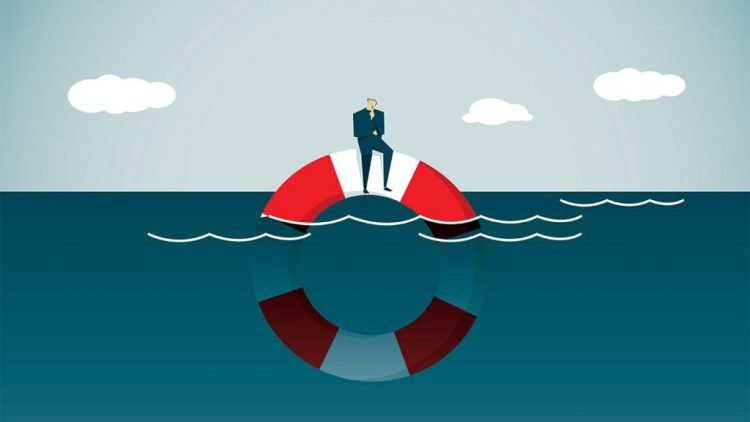If a Company Goes Bust Who Pays Redundancy? Lawful Insights for UK Employees
If a Company Goes Bust Who Pays Redundancy? Lawful Insights for UK Employees
Blog Article
Exploring the Interaction Between Business Redundancy and Organizational Flexibility for Future Growth
In the vibrant landscape of today's organization globe, the intricate relationship in between firm redundancy and business versatility becomes an essential aspect for sustained growth and success. Firms typically deal with the challenge of striking a delicate balance between keeping a level of redundancy to alleviate risks and promoting adaptability to respond promptly to the ever-evolving market needs. This delicate interaction holds the key to not only enduring in turbulent times however additionally flourishing despite uncertainty. As we check out the complex dimensions of this interplay, fascinating insights into exactly how organizations browse these complexities to lead the way for future development await.
Value of Business Redundancy
Company redundancy is a crucial aspect that enhances organizational resilience and reduces operational risks. By incorporating redundancy measures within the organizational framework, firms can much better hold up against unforeseen disruptions and variations in the organization environment. Redundancy functions as a strategic barrier, permitting business to adapt and respond effectively to unanticipated obstacles without jeopardizing essential operations.
One secret aspect of the importance of business redundancy is its role in guaranteeing continuity throughout times of situation. When confronted with sudden adjustments or emergency situations, redundant systems, resources, or employees can action in to preserve vital functions and prevent prevalent interruptions. This continuity not just safeguards the business's credibility and customer trust yet likewise minimizes monetary losses and operational downtime.

Methods for Organizational Flexibility

Creating versatile business frameworks that enable for quick changes to market characteristics and consumer demands is necessary for remaining competitive in a rapidly advancing setting. By proactively determining potential disruptions and possibilities, organizations can proactively browse around this web-site grow and adjust in an ever-changing service landscape.
Balancing Redundancy and Adaptability
Attaining a harmonious equilibrium in between operational redundancy and organizational flexibility is vital in navigating the intricacies of a dynamic business setting. Redundancy within a business provides a safeguard, guaranteeing connection and security in operations. Nonetheless, an extra of redundancy can bring about inadequacies and hinder flexibility to changing market problems. On the other hand, business adaptability allows companies to respond without delay to external disturbances and take brand-new opportunities. Striking the appropriate balance in between redundancy and adaptability is a fragile process that calls for a deep understanding of the organization's goals, sector dynamics, and threat tolerance.
To the original source achieve this equilibrium, companies need to conduct regular assessments of their operations to identify areas where redundancy is required for risk mitigation and where adaptability can drive innovation and development. Implementing flexible structures, promoting a culture of continuous knowing and enhancement, and urging open interaction throughout all degrees of the company are vital methods to harmonize redundancy and flexibility efficiently. By lining up these 2 vital components, firms can place themselves for lasting growth and success in an ever-changing company landscape.
Study on Adaptation Success
In checking out circumstances of effective business adjustment, it becomes apparent that the interplay in between functional redundancy and adaptability is a defining element in shaping durable companies. A DVD rental solution, Netflix showed exceptional flexibility by transitioning right into a streaming system when digitalization interfered with the sector. These instance research studies underscore the significance of operational redundancy coupled with organizational adaptability in fostering long-term growth and competitiveness.
Building Resilience for Future Growth
Building strength for future growth calls for a calculated alignment of operational processes with market characteristics and emerging trends. Companies need to adjust to transforming settings by cultivating a culture of flexibility, innovation, and continual enhancement.
Moreover, promoting strong connections with stakeholders, such as customers, workers, suppliers, and the area, is necessary for weathering uncertainties and preserving trust fund and support during stormy times. Effective interaction and openness play a vital role in building strength, as they aid line up assumptions and facilitate collaboration in navigating uncertainties.
Additionally, companies require to focus on learning and look at this website growth initiatives to upskill workers and outfit them with the necessary tools to adapt to changing situations. By purchasing their labor force, firms can enhance their adaptability and dexterity, ultimately strengthening their strength for lasting future growth.
Conclusion

In the vibrant landscape of today's company world, the detailed relationship in between firm redundancy and business versatility arises as a crucial variable for continual development and success. Companies frequently deal with the difficulty of striking a fragile equilibrium between keeping a degree of redundancy to reduce dangers and fostering versatility to react promptly to the ever-evolving market needs.To achieve this balance, business require to perform regular assessments of their operations to determine locations where redundancy is necessary for risk reduction and where flexibility can drive innovation and growth.In final thought, the interaction in between firm redundancy and business flexibility is crucial for future growth. Building durability through a combination of redundancy and versatility will guarantee that firms are prepared for the challenges of the future.
Report this page